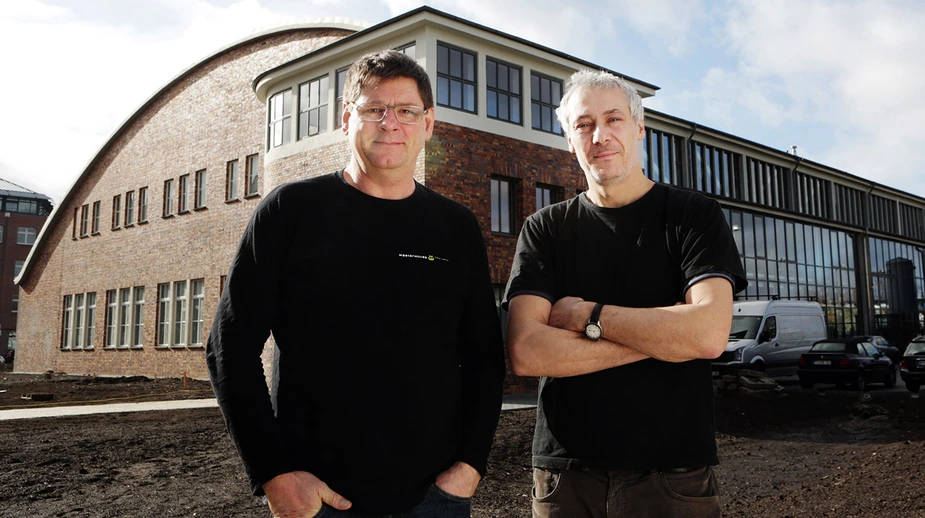The Perfect Illusion
The camera robot Milo Long Arm steals the show with its special effects
Actors appearing multiple times in one frame, dwarves fighting giants, superheroes flying through a metropolis, or battling masses made up of thousands of warriors – hardly any blockbuster production is complete without special effects. They are often produced by layering images from several sources on top of each other and adding them up. In order to create a realistic image, the camera recording the various images has to perform the exact same movement in every frame down to one hundredth of a second. This level of precision cannot be achieved by hand which is why camera robots such as Milo Long Arm were developed. There are currently only four in the world – one of which sits in an old hangar in Adlershof at mastermoves motion control, a subsidiary company of Visavis Filmproduktionen.
Thousands of people are standing on the quay and waving goodbye to the most advanced ship of its time while it slowly leaves Southampton docks. Stephan Horst, manager of Visavis Filmproduktionen, tells us that the scene in James Cameron’s blockbuster Titanic was recorded forty times with only a hundred background actors. They were simply multiplied using a sophisticated camera-robot system. Systems such as Milo Long Arm and the specialists that operate them produce effects that a moving camera couldn’t.
Four-thousand background actors in historical costumes – a costly endeavor in terms of time, logistics, and money. This can be achieved faster and at much less expense: in order to make a hundred people seem like four-thousand, the camera robot records the same scene about forty times, repeating the exact same tracking shots and movements in the exact same amount of time. In each shot, however, the people are moved around. Finally, the individual scenes are molded together and all of a sudden thousands of people are waving happily from aboard the ship. This process is aptly named crowd replication. It’s the same procedure that is used to multiply the number of fellow combatants of, for example, Frodo the Hobbit – as well as his enemies.
“Crowd replication and other special effects,” explains Stephan Horst, “require a level of precision that isn’t possible with a hand-operated camera.” In order to mold together several moving images, for example, real-life and computer-generated images into one, each movements and the image source of each and every individual picture have to be identical. The high image frequency provided by the camera synchronises the movements – up to 2,000 images per second. The most important tool for this special task is a motion control robot like Milo Long Arm. In 1999, the camera robot even copped an Oscar for its service to the advancement of special effects. Milo Long Arm moves the camera across an area of more than 300 square metres using 18 metres of rails. Sixteen axes make it possible for his lens to reach heights of up to six metres. This facilitates depicting crowds of people without crowds of actors, or dwarves and giants in a movie, which was recently done in the German production „Help, I shrunk my teacher”. The comedy movie featured the actor Anja Kling being shrunk to a tenth of her actual size by the mastermoves team.
The thirty employees of Visavis and mastermoves moved from Berlin-Kreuzberg to Adlershof at the beginning of the year. The old hangar was since converted into a movie studio. It is uniquely equipped with a high-precision, heavy-duty rotation platform which has a rotatable light rig with a twelve metre diameter hanging perpendicular to it. In concert with the robots this makes possible highly complex camera movements. The new studio is frequently used for testing such installations. Since almost every movie production has unique requirements, one has to develop custom solutions. First-rate preparation is key for having everything go smoothly once the actual shooting begins. Making movies costs a lot of money and visual effects only work when they’re done perfectly.
By Rico Bigelmann for Adlershof Journal
